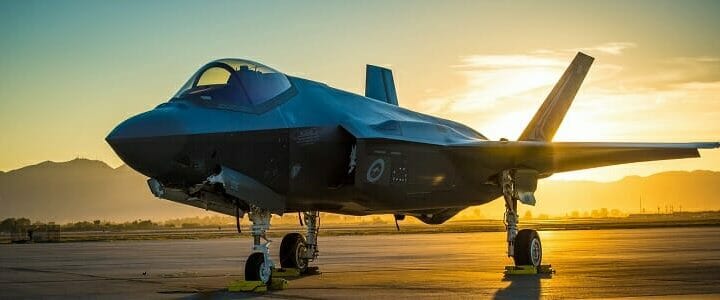With a total price tag of $1.5 trillion the F-35 Joint Strike Fighter program could be one of the most expensive programs undertaken by the Department of Defense (DoD), but proponents note the aircraft could remain flying through the 2070s – 50 years from now!
Lockheed Martin’s Joint Strike Fighter was also designed to take on numerous roles in combat, and it is a single platform that can do what the A-10 Thunderbolt II, F-16 Fighting Falcon, F/A- 18 Super Hornet, and AV-8B Harrier are currently charged with, and likely do it far better.
It will replace those legacy aircraft, which are all showing their respective age – and older platforms simply tend to cost more to keep them up to date and flying. Another factor is that as production ramps up, the cost of the program will actually come down.
“The hope is with larger numbers produced, prices will drop further, and it will be cheaper to buy a new fighter than spend a lot of money on maintenance, and upgrades to an older fleet,” said Brad Curran, industry principal for aerospace, defense & security at Frost & Sullivan.
One Fighter For Multiple Clients
Last month Lockheed Martin Corp.’s LMT Aeronautics business division was awarded a $4.71 billion modification contract to procure 78 F-35 combat jets and associated aircraft red gear in a deal that will supply aircraft to the United States Air Force, Marine Corps and Navy. The contract was awarded by the Naval Air Systems Command, Patuxent River, MD.
This will include 48 conventional takeoff and landing F-35As combat aircraft for the USAF, 14 short take-off and vertical landing F-35Bs combat aircraft for the USMC and 16 carrier-borne F-35Cs stealth fighter aircraft the Navy. This highlights the versatility of the F-35 in that it can be used in a variety of configurations to address the needs of the respective service.
The entire procurement is expected to be concluded by March 2023.
“If my math is right, that works out to $60.4 million a copy,” Curran told ClearanceJobs, noting the price drop from the nearly $90 million that the fighter was originally expected to cost.
Yet, even as the price has fallen for each aircraft, more is actually being spent on this program.
The fiscal 2020 budget approved by the U.S. Senate mid-way last year provisioned a spending plan of $57.7 billion on aircraft; while Lockheed Martin’s F-35 program has separately been allotted $11.2 billion, reflecting a 4.7% increase from the previously-allotted sum.
In a separate contract last month, Lockheed Martin was also awarded a $202 million deal to “develop, sustain and produce software builds as well as carry out developmental flight tests in support of the Joint Strike Fighter aircraft.”
Spreading the Workload
The bulk of the work on the fifth generation fighter program will be performed in Fort Worth, TX (63%); while components will be sourced from El Segundo, CA (14%); Warton, United Kingdom (9%); Orlando, FL (4%); Nashua, NH (3%); Baltimore, MD (3%); San Diego, CA (2%); and various locations within and outside the continental U.S. (2%).
“This will also provide good jobs across almost every congressional district,” added Curran.




